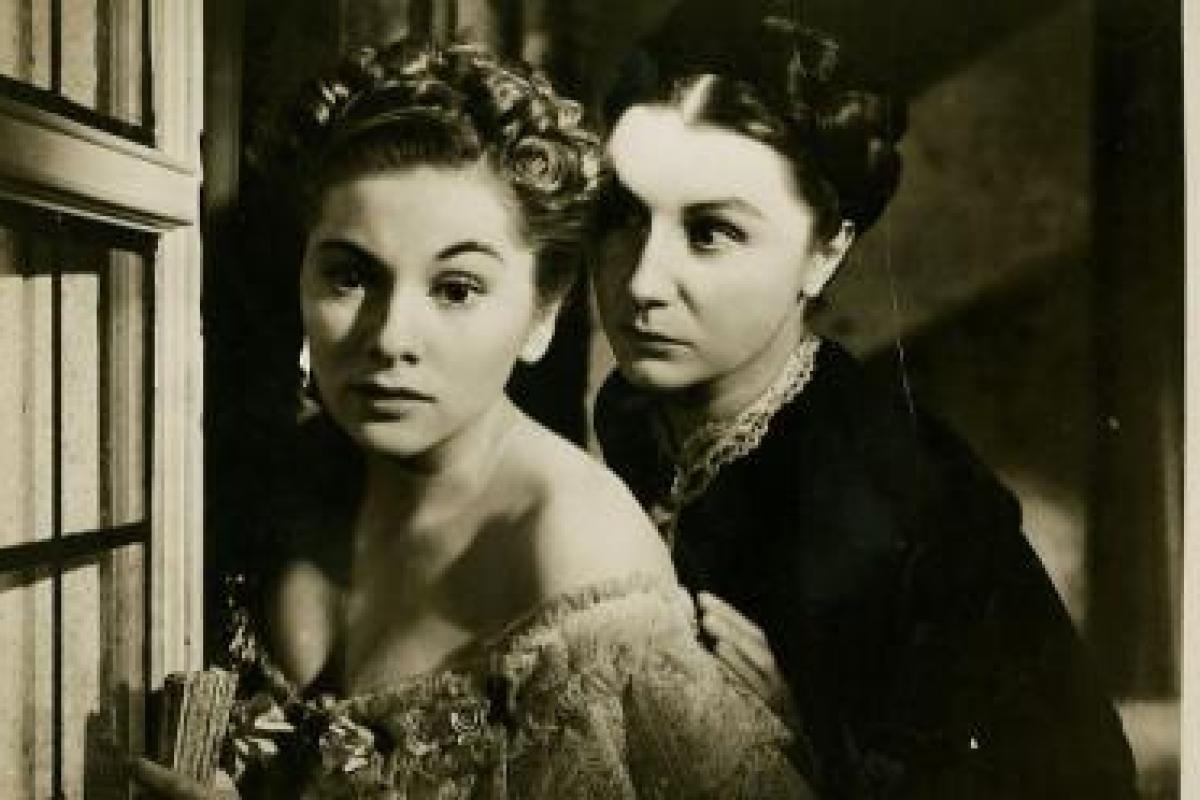The Second Mrs De Winter: ‘I want you to get rid of all these things.’
Mrs Danvers: ‘But these are Mrs de Winter’s things.’
The Second Mrs De Winter: ‘I am Mrs de Winter now!’
The 1940 film Rebecca is a haunting tale of doomed love, corrosive guilt and the ever-present past. It was Alfred Hitchcock’s first movie in Hollywood and his only work to win a Best Picture Oscar.
Hitchcock had been hired for the job by the producer David O Selznick. From the outset it was an uneasy relationship. There were disagreements about casting, performances and scheduling. Selznick liked to review different cuts of the same set-up after the shoot. But Hitchcock’s practice was to work out his shots in advance and cut in the camera.
Selznick took to prescribing executional ideas. He suggested that it would make a dramatic and resonant climax to the film if the smoke from the burning country house, Manderley, mysteriously formed a huge letter R for Rebecca in the sky. Hitchcock naturally felt this rather crude, and, while Selznick was preoccupied with producing Gone with the Wind, he shot a sequence of Rebecca’s burning negligee case, monogrammed with the letter R. Undoubtedly a more elegant solution.
Mrs Danvers: ‘Why don’t you go? Why don’t you leave Manderley? He doesn’t need you…He’s got his memories. He doesn’t love you. He wants to be alone again with her. You’ve nothing to stay for. You’ve nothing to live for really, have you?’
We have all worked with the Interfering Boss. What starts with broad direction and encouragement, evolves into helpful suggestions and ideas, and culminates in executional orders and instruction. As the pressure mounts and the relationship deteriorates, hands-off empowerment transitions into hands-on leadership.
This transition is often accompanied by protestations of special circumstances. The Interfering Boss asserts that he or she has a particular understanding of what the Client wants or the problem needs. This issue is, they say, relationship compromising, account threatening. This one’s too important to take a risk on. And then comes the promise of more creative freedom in ‘Year 2’ of the campaign. Year 2, of course, is a mythical place that few have visited.
I confess I have myself on occasion been that Interfering Boss. In the absence of a strong creative voice, I would sometimes step in with my own strong creative opinions. Leadership abhors a vacuum. I knew even at the time that this wasn’t healthy. Perhaps I was insufficiently trusting of the creative directors. Perhaps I was over-confident in my own abilities. Perhaps I was under pressure.
Thankfully, for the most part, my creative suggestions were rebuffed: the well-meaning ‘thought-starters’; the half-baked script ideas; the painful puns (‘ISA-tonic’ or ‘YouK’ anyone?); the helpful loan of my Parapluies de Cherbourg DVD (I’m sure I was onto something there); the frequent requests for a Luther Vandross soundtrack…. Looking back, my personal creative legacy may in fact be limited to the legendary laundry endline: ‘Smell the Clean.‘
So how should you deal with the Interfering Boss?
Well, you could try to ignore them, in the hope and expectation that they’ll always have their own Gone with the Wind to occupy their time. You could nod enthusiastically and then wilfully misunderstand what you’ve been asked to do. You could perhaps take on the Interfering Boss, and make a career-limiting speech about roles and responsibilities. In the long term, I’m not sure any of these approaches is sustainable.
‘We can never go back to Manderley again. That much is certain.’
I’d suggest that the smart option is to think properly about what the Interfering Boss is trying to get at with his or her awkward illustrations and sketchy scripts. If you can isolate what at root they’re looking for, the problem they’re trying to resolve, you can probably come up with a better, more satisfying solution. This is, after all, how Hitchcock dealt with Selznick’s ‘smokey R’ proposal
Sir John Hegarty would always say, to Clients and account people alike: ‘Describe the problem, don’t prescribe the solution.’ In other words, tell me we have a branding issue; don’t demand that I put the brand in the first 5 seconds. Wise counsel. I’m sure we always progress further, faster, when well-briefed creatives are allowed to do the creating.
Of course, the ultimate way of dealing with the Interfering Boss is to do exactly what they ask you to do – to the letter. They’ll inevitably be confronted with their own creative shortcomings; with the linear logic of their inelegant ideas; with the merely moderate and quietly conventional. That’ll really wind them up.
Read more blogs in our Library here or view the original blog here
